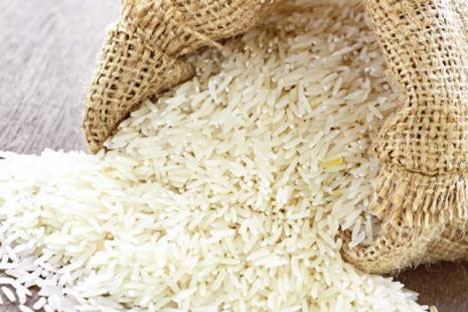Russia reopens its doors to Indian rice

Supplies of Indian rice fell sharply, and winning back market share will be no simple matter. Source: Press Photo
The International Grains Council (IGC) forecasts a record rice harvest in India of 107 million metric tonnes this year. As the number one rice exporter in the world, India has the capacity to regain its positions in Russia.
On September 1, Moscow lifted the ban on supplies of Indian rice, which was imposed on February 19, 2013, after one batch was found to contain the Khapra beetle, a destructive grain pest.
A request to lift the ban was made in late August by Indian Trade Minister Anand Sharma during a meeting with Russian Minister of Economic Development Alexei Ulyukaev. He assured his Russian colleague that India had the situation under strict sanitary control. A RIR source in the Federal Service for Veterinary and Phytosanitary Surveillance said the decision to lift the ban was taken following a visit by Russian inspectors to ensure that India's deed was as good as its word.
It is by no means the first time that Moscow has introduced sanctions against rice suppliers, including India, recalls Irina Glazunova, deputy director general of the Institute for Agricultural Market Studies. In his assessment, the restrictions were brought about by objective factors: excess content of spoiled grain, and high content of pesticides, heavy metal salts, or, as in the case of India, the presence of quarantine pests.
As a result of Russia's decision, supplies of Indian rice fell sharply, and winning back market share will be no simple matter. According to the vice president of the Russian Grain Union, Alexander Korbut, domestic production of rice in Russia has risen threefold in recent years, and the country is looking to use its excess production to become an exporter itself. According to Glazunova, this year Russia will also witness a large harvest — about 900,000 metric tonnes. Although lower than in the previous three years, when more than 1 million metric tonnes were harvested, it is still significantly higher than the level of domestic consumption, which stands at 560-580,000 metric tonnes.
In his expert opinion, the projected decline in domestic production is due to the reduction in planted acreage that has resulted from the sharp decrease in the level of tariff protection following Russia's accession to the WTO. The fact is that rice production is the agricultural sector hit hardest by Russia's membership of the organization. Russian agricultural lobbyists are in the process of preparing materials to revoke the preferential treatment for foreign countries and to set up a special system of per-hectare payments for growing rice. Work is also being carried out by the Russian Ministry of Agriculture to develop a set of compensation measures.
Related:

Russian agriculture official concerned about food imports
Nevertheless, the current reduced volume of production will still suffice for both domestic consumption and exports. The share of imports in the Russian market is shrinking rapidly. Whereas in 2003-2004 imports accounted for roughly 70 percent of rice sales in Russia, in the last three years this has dropped to 30 percent. The reason why the figure is not lower still is because Russia's surplus production is of short- and medium-grain rice, which was, until recently, imported mainly from China.
It is in Russia's long-grain segment that producers are looking to make large profits. Although India's niche was not left vacant for long, the gap was successfully exploited by Myanmar, Vietnam, and other suppliers. “Recent years have seen an increase in the consumption of steamed rice and a few exotic sorts (jasmine, basmati, wild), although the volumes are still quite modest,” says Glazunova.
It is gourmet tastes such as these, as well as restaurant clientele, that exporters from India will have to cater to, especially since the country is the world's largest grower of aromatic rice. Although the quality of Russian rice is not inferior to imported sorts, its stickiness makes it less suitable for use as a side dish. It is more commonly found in the preparation of milk porridge and soups.
But even here exporters may have to brace themselves for stronger competition from Russian producers. Glazunova is confident that Russian scientists will develop methods to allow domestic growers to add long-grain rice to their list of crops.
All rights reserved by Rossiyskaya Gazeta.
Subscribe
to our newsletter!
Get the week's best stories straight to your inbox